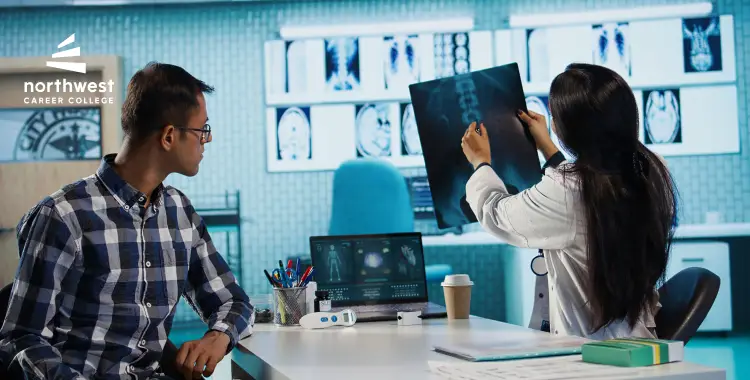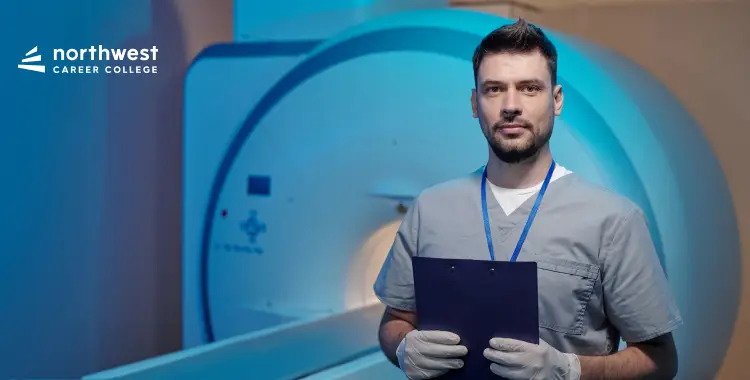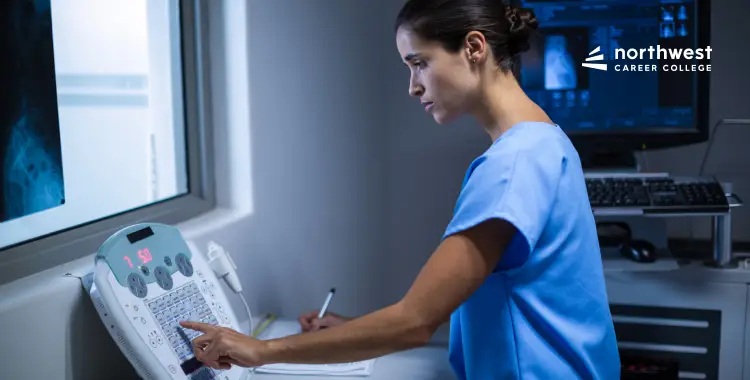Top 5 Things Patients Need to Hear Before Their X-Ray
- November 4, 2025
- 1.1k views
- 4 min read
The X-ray room used to be quiet, filled only with the sound of a large machine. Stepping inside the room can be stressful for patients, particularly if it is their first time. The unfamiliar equipment can make their hearts beat faster.
As a future radiographer, it’s your responsibility to capture good images and make the patient feel safe and secure. A few comforting words can put them at ease and establish trust.
In this post, you’ll discover five important things patients must be told before their X-ray—simple statements that can improve their experience.

Table of Contents
“This Will Only Take a Few Minutes”
Informing the patient beforehand that the X-ray will only take a few minutes will ease their nerves. Most individuals anticipate that the procedure will be uncomfortable or take a long time if it is their first time.
Explaining calmly and peacefully that the procedure will be brief and mundane can put them at ease. This also fosters trust because you respect their time and comfort level.
A plain statement like, “This will only take a few minutes,” can make the encounter relaxing and positive.
“You Won’t Feel Any Pain”
One of the most critical pieces of information to share with patients, particularly newcomers, is that an X-ray doesn’t hurt. Although the equipment may seem slightly menacing, X-rays aren’t painful and noninvasive. By saying, “You will not experience any pain,” you can calm customary fears.
The reminder allows adults who might be tense in anticipation of pain to relax and remain still for a good image. Similarly, soft words and a soothing tone make a huge difference in children afraid of equipment or unsure of what will happen.
Before the procedure starts, this message calms everyone, whether a fearful child or a fearful adult.
“Here’s What You Need to Do”
It’s crucial to provide clear and easy directions for the patient before taking an X-ray. Whether you’re instructing them to remove their jewelry, remain still, or change their position, small directions make a huge difference in achieving a good image.
When patients clearly understand what they’re doing, the experience goes smoother and faster. It also minimizes the possibility of requiring a re-take of the scan, which saves time and minimizes radiation exposure.
Clear directions assist the technician in doing their job better and make the patient feel more at ease and engaged in the experience.
“Your Safety Is a Top Priority”
Most patients are uncomfortable around X-ray equipment because they do not understand it well enough. Assuring them that their safety comes above all and explaining safety modes can ease their fear and establish trust.
Inform them about the very minimal level of radiation used by modern X-ray equipment and that safety precautions, such as lead aprons, protect them from it.
Sometimes a little explaining goes a long way: “We take the lowest dose possible, and this apron shields the rest of your body.” When patients realize their safety is being cared for well enough, they tend to relax and become compliant during the procedure.
“Let Me Know If You Have Any Questions”
Inviting patients to ask questions is one of the easiest ways to make them feel heard and supported. A simple phrase like “Let me know if you have any questions” encourages open communication and shows that you care about their comfort and understanding.
This can make a big difference for many people, especially those feeling nervous or confused. It turns the experience into a two-way conversation rather than just a procedure.
When patients feel comfortable speaking up, they’re more relaxed and more likely to follow instructions, which helps everything go smoothly. Most importantly, it builds trust—something every radiology technician should aim for.
Conclusion
Thoughtful and reassuring communication is crucial in creating a positive patient experience during their X-rays. The simple phrases we’ve discussed, such as setting clear expectations, easing fears, giving clear instructions, emphasizing safety, and inviting questions, can significantly affect patient comfort and trust.
As an aspiring radiographer, developing your technical skills and ability to connect with patients will set you apart in this rewarding field. If you’re ready to start your journey and learn how to provide expert care with empathy, enroll now in our Radiography Program at Northwest Career College and take the first step toward a meaningful healthcare career.




